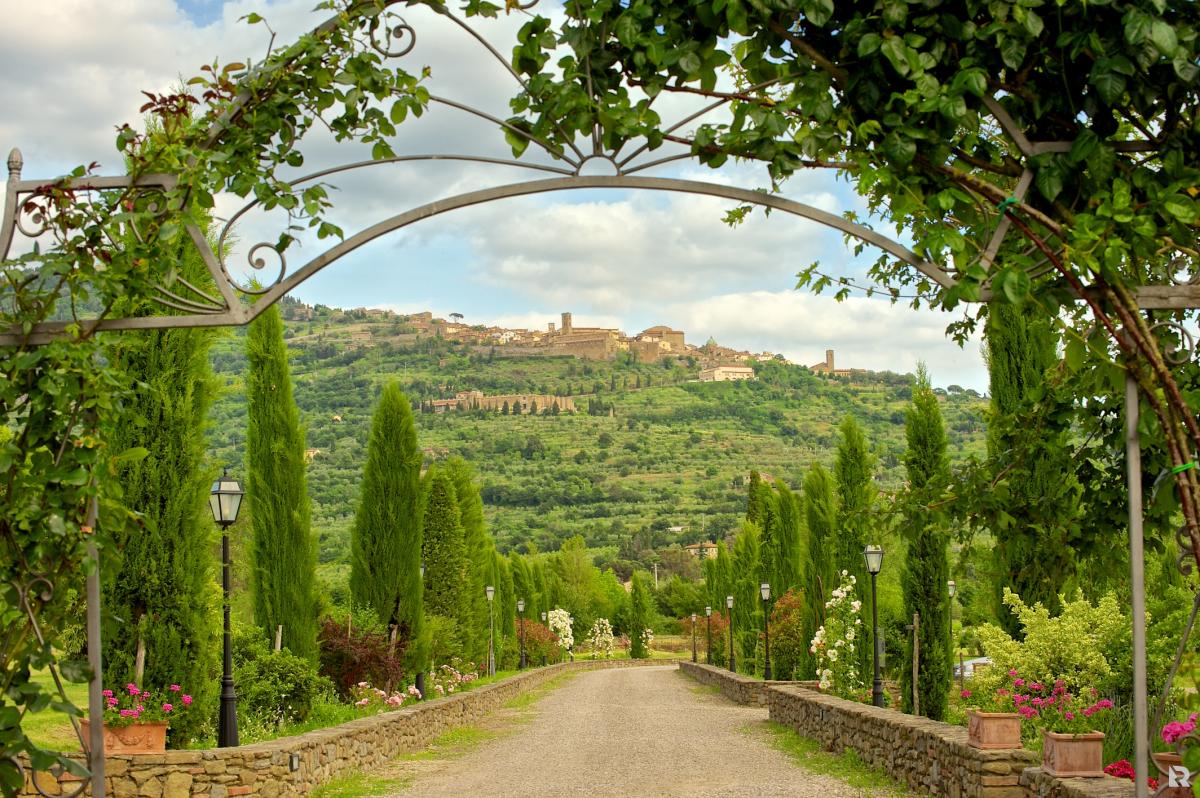




 18 September 2014
18 September 2014
 Caterina Pomini
Caterina Pomini
 28235
28235
According to history, Cortona was one of the most powerful lucumoniae of the Etruscan League, a Roman colony and presumably a bishopric; the Gothic War (535-554) reduced the town to mere rubble and further devastation occurred until Charlemagne's arrival (774). In the 13th century, Cortona became a free commune minting its own coins and was made an episcopal see in 1325. At the beginning of the 15th century - after being conquered by the King of Naples - it was sold to Florence and later incorporated into the Grand Duchy of Tuscany.
An overview of Cortona's main sights
The Etruscan Academy Museum (MAEC) is certainly the town's most popular attraction: besides serving as a documentation center for the Archaeological Park, it includes important Etruscan artifacts, a fine collection of Roman ceramics and bronzes, a small exhibition devoted to the Egyptians and some Renaissance and Baroque paintings.
Look for the Etruscan remains: the mighty defensive walls, a double-arched gate known as Porta Bifora, the barrel vault of Via Guelfa and a vaulted arch in the Palazzo Cerulli Diligenti.
The Roman remains include a cistern next to the Church of Sant'Antonio Abate and an aqueduct by the Porta Montanina.
In the archaeological area of Sodo and Camucia you can visit the so-called “meloni” (some impressive burial mounds from archaic times) and the Tanella di Pitagora (an Etruscan chamber-tomb).
Some Roman roads have been recently discovered in an area known as the “Cortona mountains” and the remains of a late Republican villa can be admired on a hillside overlooking Lake Trasimeno.
Piazza della Repubblica is the heart of the old town and houses the picturesque City Hall which was built in the 12th century on the ruins of the Roman Forum.
The Cattedrale di Santa Maria Assunta (15th century) houses some valuable paintings by Pietro da Cortona, Lorenzo Berrettini and the Signorelli School; the bell tower was designed by Francesco Laparelli, the same architect who supervised the construction of the city of Valletta in Malta.
Other interesting religious buildings are: the Church of San Francesco, the Church of Santa Margherita and the Church of Sant'Antonio Abate. The Abbey of Farneta (7th century) is simply superb; however, it is not easily reachable if you don't have a car.
A 45 minute walk outside the walls of Cortona will take you to Le Celle Hermitage, a spellbinding Franciscan sanctuary founded by St. Francis himself in the early 13th century. The friar's cell can still be visited and has been kept untouched since his death.
Last but not least, real-life Villa Bramasole (Diane Lane's home in Under the Tuscan Sun) lies nestled on a hill, just 3 minutes outside the city walls; renovated between 2006 and 2010, it can be rented for €1828 - 3142 /night!
If you are visiting Florence and you feel like going on a group tour to Cortona, contact www.ciaoflorence.it for details.
THIS SECTION
IS UNDER CONSTRUCTION